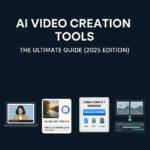The rise of artificial intelligence has completely transformed how students study, write, research, and manage time. From generating essays to summarising long research papers, AI tools are becoming indispensable companions for students across schools, colleges, and universities.
The good news? Many of the most powerful AI tools for students are free — making them accessible to learners worldwide. Whether you’re working on an assignment, preparing a presentation, learning to code, or just trying to stay organised, there’s an AI tool that can save you time and boost your productivity.
In this guide, we’ll explore 25+ free AI tools for students in 2025 — covering:
- AI writing tools for essays, assignments, and research papers
- AI study helpers for note-taking, summarising, and organising thoughts
- AI presentation & design tools for class projects
- AI research assistants to find and understand academic papers
- AI coding tools for computer science and engineering students
- AI productivity apps to stay focused and efficient
By the end of this guide, you’ll know exactly which free AI tools to use to study smarter, not harder.
Why Students Should Use AI Tools
Artificial intelligence has moved from being a futuristic concept to becoming an everyday assistant for students worldwide. Whether you are in high school, college, or pursuing research, free AI tools for students provide a unique opportunity to learn smarter and faster without extra costs.
Here are some compelling reasons why students should integrate AI into their studies:
Save Valuable Time
Students often juggle multiple assignments, research papers, group projects, and exams. AI tools act as time-savers by:
- Summarising long research articles in seconds (Scholarcy, Perplexity AI).
- Generating essay outlines or captions instantly (ChatGPT, Jasper free versions).
- Automating note-taking during lectures (Otter.ai).
Instead of spending hours on routine tasks, students can focus more on critical thinking and learning outcomes.
Boost Productivity & Organisation
AI-powered apps help students stay organised with minimal effort:
- Notion AI structures class notes into clear, searchable outlines.
- Trello AI assists with project timelines and deadlines.
- Calendar + AI assistants remind students about due dates and study sessions.
With these AI productivity tools, students can manage multiple subjects without feeling overwhelmed.
Accessibility & Inclusivity
AI tools level the playing field for all learners:
- Text-to-speech and voice recognition tools support visually impaired or dyslexic students.
- AI translation features (Google Bard, DeepL) help international students overcome language barriers.
- AI summarisation ensures even struggling learners can grasp complex topics quickly.
This inclusivity ensures every student benefits from technology, not just the tech-savvy.
Cost-Effective Learning
Many AI tools for students are completely free or offer generous free plans. Instead of paying for expensive tutoring or premium writing software, learners can:
- Use Grammarly Free for writing improvement.
- Access Canva’s free AI features for presentations.
- Try ChatGPT’s free tier for study support.
For students on a tight budget, this makes AI a game-changer in affordable education.
Smarter Research & Learning
Gone are the days of scrolling through endless Google search results. With AI research assistants like Perplexity AI or Elicit, students can:
- Get concise, reliable summaries of academic sources.
- Find references in seconds.
- Organise data for research papers.
This leads to smarter, data-driven learning — helping students stay ahead academically.
Best Free AI Tools for Students (2025 Edition)
Free AI Writing Tools for Students
Writing assignments, essays, or research papers is one of the most time-consuming tasks for students. Luckily, AI writing tools have made the process faster and easier — without replacing the student’s own creativity and critical thinking. Here are some of the best free AI tools for writing that students can start using today:
1. ChatGPT (Free Version)
ChatGPT remains one of the most powerful free AI tools for students. With the free plan (powered by GPT-3.5 in 2025), students can:
- Generate essay outlines and summaries.
- Ask for explanations of complex topics.
- Brainstorm ideas for creative writing.
- Draft assignment introductions and conclusions.
Pros:
- Extremely versatile and easy to use.
- Great for brainstorming and quick help.
- Available as both a web app and mobile app.
Cons:
- Free version has some limitations (slower, fewer features compared to GPT-4).
- Content requires fact-checking to ensure academic accuracy.
Best Use Case: Perfect for homework help, assignment outlines, and study explanations.
2. QuillBot (Free Paraphrasing & Grammar Tool)
QuillBot is a paraphrasing tool that helps students rephrase sentences, improve clarity, and avoid plagiarism. With its free version, students get:
- Paraphrasing mode with limited rewrites.
- Grammar checker for essays and assignments.
- Word flipper to adjust tone.
Pros:
- Quick paraphrasing for better readability.
- Helps students understand multiple ways to phrase content.
- Free grammar check included.
Cons:
- Free plan has limits on characters and modes.
- Over-reliance can affect original writing style.
Best Use Case: Great for paraphrasing research papers and improving academic writing quality.
3. Grammarly (Free Edition)
Grammarly is one of the most popular AI writing tools for grammar and style corrections. Students can:
- Check spelling, grammar, and punctuation.
- Improve sentence clarity and conciseness.
- Receive suggestions on tone adjustments.
Pros:
- Available as a browser extension, app, and MS Word/Google Docs plugin.
- Helps improve writing skills over time.
- Free version covers the basics effectively.
Cons:
- Advanced style and tone suggestions require a premium plan.
- Limited free word count for plagiarism checks.
Best Use Case: Essential for proofreading essays, assignments, and presentations.
Free AI Study Tools
Studying smarter means finding the right tools that reduce workload while improving understanding. Here are some of the best free AI study tools for students in 2025:
4. Notion AI (Free Tier)
Notion is already one of the most popular apps for students, but with Notion AI, it becomes a powerful study companion. Even in its free tier, Notion AI can:
- Generate study outlines from class notes.
- Summarise long paragraphs into clear bullet points.
- Rewrite notes for better clarity.
- Answer questions directly within your notes.
Pros:
- Combines note-taking and AI assistance in one app.
- Free tier includes plenty of AI actions.
- Perfect for students who already use Notion for organisation.
Cons:
- Free AI usage is limited (credits run out quickly).
- Requires a learning curve for new users.
Best Use Case: Organising lecture notes, creating quick summaries before exams, and managing class projects.
5. Perplexity AI
Perplexity AI is a free AI research assistant that works like a next-generation search engine. Unlike Google, which just lists links, Perplexity provides direct answers with sources — making it extremely useful for research projects.
Pros:
- Provides cited sources for reliability.
- Great for quick academic research.
- Free to use without login (basic version).
Cons:
- Free plan has search limits.
- May not always access niche academic journals.
Best Use Case: Perfect for finding reliable references, fact-checking, and simplifying complex topics.
6. Google Bard (Free)
Google Bard, now part of Google’s AI ecosystem, is another strong free tool for students. It can:
- Brainstorm ideas for assignments.
- Summarise research articles.
- Translate and explain complex terms.
- Integrate with Google Docs and Sheets for direct study support.
Pros:
- 100% free and accessible.
- Integrates seamlessly with Google Workspace (Docs, Sheets, Gmail).
- Fast responses with web access.
Cons:
- Answers may need fact-checking for academic use.
- Sometimes general rather than deeply academic.
Best Use Case: Students who already rely on Google Docs or Slides for projects and want integrated AI study support.
Free AI Tools for Presentations & Design
Presentations and visuals are now a core part of student life — whether it’s for class assignments, project pitches, or research presentations. Luckily, several free AI tools make it easy to design professional-quality slides and graphics without spending hours on formatting.
7. Canva (Free Plan + Magic AI)
Canva is one of the most widely used design platforms, and its free plan combined with Magic AI tools is perfect for students. With Canva, students can:
- Create professional presentations, infographics, and posters.
- Use Magic Design to auto-generate templates based on text input.
- Leverage Magic Write (AI copy tool) for slide text and headlines.
- Use drag-and-drop features to customise designs for projects.
Pros:
- Huge free template library.
- Extremely beginner-friendly.
- Free plan includes essential AI tools.
Cons:
- Premium templates locked in paid plan.
- AI credits on free plan are limited.
Best Use Case: Students preparing class presentations, project posters, and quick social-style graphics.
8. Tome AI (AI Presentation Builder)
Tome AI is an AI-first presentation tool that helps students create entire slide decks from a single text prompt. For example, if a student types “History of Artificial Intelligence,” Tome generates:
- A complete deck with slides.
- Titles, content, and relevant images.
- AI formatting that looks professional.
Pros:
- Saves hours of slide preparation time.
- Great for idea-to-presentation workflows.
- Free plan offers solid features for students.
Cons:
- Customisation options are more limited compared to Canva.
- Requires internet access to use fully.
Best Use Case: Students who need last-minute, auto-generated presentations for classes, seminars, or group projects.
Free AI Tools for Research & Learning
Research can be overwhelming — from finding reliable academic papers to digesting complex concepts. Fortunately, several free AI tools are designed specifically to make research smarter, faster, and more efficient.
9. Scholarcy (AI Summariser for Academic Papers)
Scholarcy is a free AI tool that helps students and researchers summarise long academic papers into digestible highlights. Instead of spending hours reading a dense 20-page paper, Scholarcy extracts the key findings, methods, and references.
Pros:
- Saves hours of reading time.
- Summarises key insights into flashcards.
- Free browser extension available.
Cons:
- Free plan has limits on how many papers you can summarise per month.
- Summaries may miss nuanced details in complex papers.
Best Use Case: Perfect for students writing literature reviews, thesis projects, or research assignments.
10. Semantic Scholar (Free AI Research Database)
Semantic Scholar is a free AI-powered academic search engine created by the Allen Institute for AI. Unlike Google Scholar, it provides AI-filtered, relevant research papers and highlights the most influential ones.
Pros:
- 100% free to use.
- AI highlights influential citations and key concepts.
- Covers multiple disciplines, from science to social studies.
Cons:
- Not as broad as Google Scholar in coverage.
- Focused more on academic researchers than casual learners.
Best Use Case: Students working on research papers, dissertations, or academic projects.
11. Elicit (AI Research Workflow Assistant)
Elicit is an AI research assistant that helps students automate parts of their research workflow. It can:
- Suggest relevant papers.
- Extract methods and results.
- Generate structured summaries of findings.
Pros:
- Saves time during academic research.
- Provides structured comparisons of papers.
- Free for basic academic use.
Cons:
- Still in beta (2025), some features experimental.
- Requires user verification for academic access.
Best Use Case: Ideal for students conducting systematic reviews or data-heavy academic projects.
Free AI Tools for Coding & Technical Students
Programming assignments, debugging, and learning new coding concepts can be challenging. Thankfully, AI coding assistants make the process smoother by providing real-time suggestions, explanations, and code generation — many of which are free.
12. GitHub Copilot (Free for Students)
GitHub Copilot, powered by OpenAI Codex, is like an AI pair programmer. It suggests code completions in real time, helping students write faster and learn by example. The best part? GitHub offers Copilot free for verified students via the GitHub Student Developer Pack.
Pros:
- Auto-suggests entire lines and functions.
- Supports multiple programming languages (Python, C++, Java, JavaScript, etc.).
- Integrated directly into Visual Studio Code.
Cons:
- Requires strong internet connection.
- Suggestions sometimes need debugging.
Best Use Case: Students learning programming, completing coding homework, or working on software projects.
13. Replit Ghostwriter (Free Tier)
Replit is an online IDE (integrated development environment), and its Ghostwriter AI acts as a coding assistant. With the free plan, students can:
- Get code suggestions inside the browser.
- Debug and explain errors in plain English.
- Collaborate on group coding projects.
Pros:
- Beginner-friendly (runs in the browser, no setup).
- Supports collaboration (great for group assignments).
- Explains code step by step, making it educational.
Cons:
- Free plan has limited usage.
- Advanced Ghostwriter features require paid upgrade.
Best Use Case: Perfect for students working on coding projects or learning new programming languages online.
Free AI Tools for Productivity & Focus
Studying effectively isn’t only about writing essays or solving equations — it’s also about managing time, staying focused, and organising tasks. These free AI productivity tools give students the edge they need to balance multiple responsibilities.
14. Otter.ai (AI Note-Taking & Transcription)
Otter.ai is one of the most popular AI transcription tools, widely used by students for lectures, study groups, and online classes. With its free plan, students can:
- Record live lectures and automatically generate transcripts.
- Highlight and summarise key points in real time.
- Search through transcripts by keywords for quick revision.
Pros:
- Saves hours of manual note-taking.
- Syncs with Zoom, Google Meet, and Microsoft Teams.
- Free plan includes 300 minutes of transcription per month.
Cons:
- Accuracy may vary depending on audio quality.
- Free tier has limited monthly minutes.
Best Use Case: Perfect for students attending online lectures or group discussions who want accurate notes without distractions.
15. Trello with AI Features
Trello is already a top project management tool, but with AI integrations (like automation and smart suggestions), it becomes a productivity powerhouse for students. Using the free plan, students can:
- Organise assignments, deadlines, and projects into boards.
- Automate task reminders with AI-powered bots.
- Collaborate with classmates on group assignments.
Pros:
- Extremely simple to use.
- Visual board layout makes project tracking easy.
- Free plan is generous for student needs.
Cons:
- Advanced AI-powered automation requires upgrades.
- Can become cluttered without discipline.
Best Use Case: Ideal for managing group projects, exam prep schedules, and assignment deadlines.
How to Choose the Right Free AI Tools as a Student
With so many free AI tools for students available, it’s easy to feel overwhelmed. The key is to select tools based on your specific academic needs, subjects, and study style. Here’s how to decide:
Based on Study Needs
- For writing essays & assignments → ChatGPT, Grammarly, QuillBot.
- For research projects → Scholarcy, Semantic Scholar, Perplexity AI.
- For presentations → Canva, Tome AI.
- For coding & technical work → GitHub Copilot (free for students), Replit Ghostwriter.
- For productivity → Notion AI, Trello with AI, Otter.ai.
👉 Match your biggest academic challenge with the tool designed to solve it.
Device & Compatibility
Before picking a tool, check:
- Does it work on your laptop, tablet, or mobile phone?
- Does it integrate with apps you already use (Google Docs, MS Word, Zoom)?
- Can you export results into formats required by your professors (PDF, Word, PPT)?
👉 For example, Canva is best for visual learners, while Notion AI is ideal for organised note-takers.
Ease of Use & Learning Curve
Not every tool is equally simple.
- Beginner-friendly: Canva, Grammarly, Otter.ai.
- Intermediate: Notion AI, QuillBot, Perplexity.
- Advanced: GitHub Copilot, Elicit, Runway (for creative projects).
👉 Start with tools you can learn quickly, then move to advanced ones as you grow.
Privacy & Security
Always check:
- Does the tool store your personal data?
- Is your work shared with third parties?
- Can you control what gets saved?
👉 For academic safety, stick to reputable AI tools like Google Bard, Notion AI, or Grammarly.
Balance Free vs Paid Features
Free versions of AI tools are often powerful enough for students. However:
- Premium features may be worth it if you use a tool daily.
- Some tools (like GitHub Copilot) are completely free for verified students — a major bonus.
👉 Use the free plans as much as possible, then upgrade only if it significantly boosts your productivity.
Pros & Cons of Using Free AI Tools for Students
Like any technology, free AI tools for students have both benefits and limitations. Understanding these helps students use them wisely without becoming overly dependent.
✅ Pros of Free AI Tools for Students
- Cost-Free Access
- Most tools provide generous free plans.
- Students on tight budgets can use world-class AI without spending money.
- Time-Saving Efficiency
- Tools like ChatGPT and Scholarcy reduce hours of reading or writing into minutes.
- Otter.ai takes lecture notes automatically, freeing students to focus on listening.
- Boost in Productivity & Organisation
- Notion AI and Trello AI keep projects structured.
- Automated reminders ensure deadlines aren’t missed.
- Improved Academic Writing & Communication
- Grammarly and QuillBot sharpen grammar and sentence flow.
- Canva + Tome AI simplify presentations, making them polished and professional.
- Enhanced Research & Learning
- Tools like Perplexity AI and Semantic Scholar help students find reliable references quickly.
- AI summarisation makes complex academic content easier to digest.
❌ Cons of Free AI Tools for Students
- Feature Limitations
- Free plans often restrict the number of queries, credits, or advanced features.
- Students may hit usage caps quickly if they rely heavily on one tool.
- Accuracy Concerns
- AI outputs sometimes contain factual errors or oversimplifications.
- Students must double-check information to maintain academic credibility.
- Risk of Over-Dependence
- Relying too much on AI for essays or coding may limit real learning.
- Tools should support learning, not replace student effort.
- Privacy & Data Issues
- Some tools store data in the cloud.
- Students must ensure sensitive information (like research data) is safe.
- Lack of Personalisation
- AI cannot fully understand a student’s unique writing style or thought process.
- Generic responses may need heavy editing.
⚖️ Bottom Line
The pros of free AI tools far outweigh the cons, as long as students use them responsibly. Treat AI as a study partner, not a replacement for critical thinking.
FAQs About Free AI Tools for Students
1. What are the best free AI tools for students in 2025?
Some of the best free AI tools for students include:
- ChatGPT Free – for brainstorming and assignments.
- Grammarly Free – for grammar and writing improvement.
- Notion AI – for note-taking and organisation.
- Perplexity AI – for quick, reliable research.
- Canva Free + Magic AI – for presentations and visuals.
- GitHub Copilot (student free tier) – for coding help.
2. Is ChatGPT free for students?
Yes ✅. OpenAI provides a free version of ChatGPT (GPT-3.5) that students can use for essays, research, and study support. The paid GPT-4o plan offers more advanced features, but the free plan is still highly useful.
3. Can AI help with homework?
AI tools can definitely assist with homework by:
- Explaining complex concepts (ChatGPT, Bard).
- Generating outlines and summaries (Scholarcy, Elicit).
- Checking grammar and writing quality (Grammarly, QuillBot).
⚠️ However, students should use AI responsibly and not copy answers blindly — it works best as a study assistant, not a shortcut.
4. Are free AI tools safe for academic use?
Most reputable free AI tools are safe, provided students:
- Stick to trusted platforms (e.g., Notion, Google Bard, Grammarly).
- Avoid sharing sensitive personal or academic data.
- Always cross-check information before submitting work.
5. What free AI tools are best for research papers?
For academic research, the best free AI study tools are:
- Scholarcy – summarises papers into key points.
- Semantic Scholar – AI-powered academic search engine.
- Elicit – automates research workflows.
- Perplexity AI – provides answers with citations.
6. Do AI writing tools count as plagiarism?
No ❌, AI writing tools like ChatGPT or QuillBot do not inherently count as plagiarism. However, if students copy AI-generated text without editing or citing sources, it may be considered academic dishonesty. The safest approach is to use AI for idea generation, drafts, and rewrites, while keeping the final work original.
7. Which free AI tool is best for coding students?
- GitHub Copilot (free for verified students) → AI-powered coding assistant.
- Replit Ghostwriter Free → Great for browser-based coding projects.
Both tools suggest code, debug errors, and explain logic — perfect for computer science learners.
8. What free AI tool is best for presentations?
- Canva Free + Magic AI → For creating professional slides and graphics.
- Tome AI → For generating complete slide decks from text prompts.
9. How do AI tools improve student productivity?
AI improves productivity by:
- Automating repetitive tasks (Otter.ai for transcriptions, Trello AI for task management).
- Generating study materials faster.
- Reducing time spent on formatting or proofreading.
10. Will AI replace students’ own learning?
No. AI is a support system, not a replacement. It can handle repetitive tasks, summarise content, and provide study assistance. But critical thinking, creativity, and analysis still require human effort. The best results come from combining AI efficiency with student intelligence.
Conclusion
The rise of free AI tools for students has transformed the way learners approach academics in 2025. From AI writing assistants like ChatGPT, Grammarly, and QuillBot, to study helpers like Notion AI and Perplexity, to design and presentation tools like Canva and Tome — students now have access to powerful technology at their fingertips, often at no cost.
The benefits are undeniable:
- Save valuable time on assignments and research.
- Boost productivity with AI note-taking and project organisation.
- Improve academic writing and presentation quality.
- Access smarter study resources without spending money.
At the same time, it’s important to use AI responsibly. These tools are best seen as study companions — helping with productivity, brainstorming, and efficiency — while students themselves remain responsible for critical thinking, originality, and learning outcomes.
👉 If you’re a student in 2025, there’s never been a better time to study smarter, not harder. Start exploring the tools in this guide, experiment with the ones that fit your needs, and create your own AI-powered learning workflow.
For more insights into how artificial intelligence is shaping education, innovation, and productivity, visit us at Ai Of The Decade.











